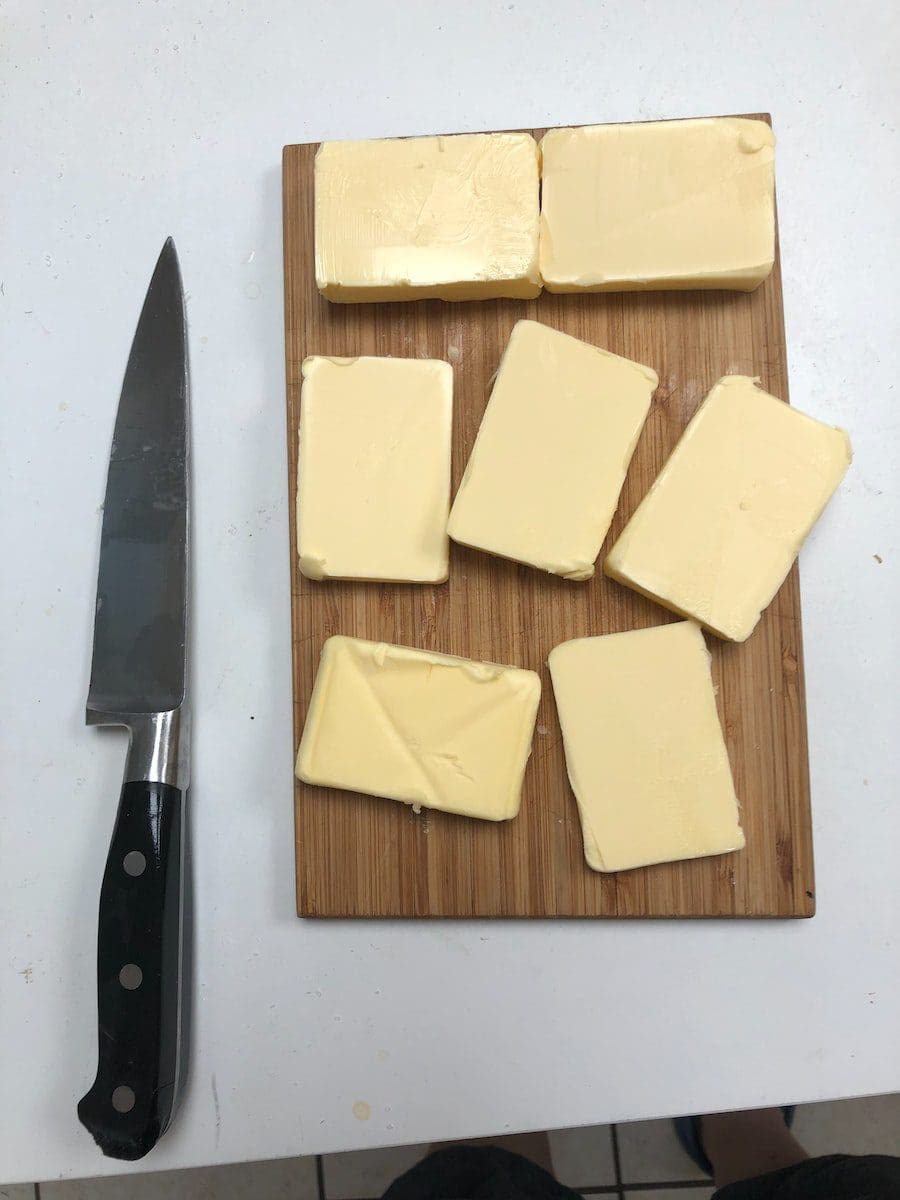Fats are arguably the most important and the most common elements of the food that we eat. Without fats, the ingredients that we put together while cooking, would not be able to mix and coagulate together.
Fats are hence incredibly necessary to prepare the different food products that we eat.
Key Takeaways
- Butter is made from animal fat and has a creamy texture.
- Cooking oil is made from plant sources and is liquid at room temperature.
- Butter has a distinct flavor, while cooking oil has a neutral taste.
Butter vs Cooking Oil
The difference between Butter and Cooking oil is that Butter is saturated animal fat that is obtained from milk and it is prepared by separating the fatty cream from the milk. On the other hand, Cooking oil is an unsaturated vegetable oil that is obtained from plant seeds, such as sunflowers, grapes, olives, and so on.

Butter is one of the most popular and commonly used saturated fats. It is an animal product and is obtained from animal milk.
It is prepared by separating cream from the liquids of the milk, through a process called churning. Butter has a higher cholesterol content than most other saturated and unsaturated fats.
Cooking oil refers to the many kinds of unsaturated fats that are used while preparing different dishes.
Cooking oil is obtained from dried plant seeds, such as sunflower seeds, grape seeds, mustard seeds, and so on. Dried seeds are pressed to squeeze out the oils present inside the seed.
Comparison Table
| Parameters of Comparison | Butter | Cooking Oil |
|---|---|---|
| Definition | It is a saturated fat obtained from animal milk | It is an unsaturated fat obtained from the vegetable and plant seeds |
| Method of preparation | It is obtained by separating the cream from the liquids in the milk | It is obtained by pressing and squeezing the oils from dried plant seeds |
| Taste | Typically has a salty taste | The taste of the oil depends on the type of seed used |
| Smoke point | Butter has a low smoke point | Cooking oils have a high smoke point |
| Health factors | Butter is high in cholesterol | Cooking oils are low in cholesterol |
What is Butter?
Butter is one of the most commonly used cooking fats. It is used in almost all the cuisines in the world and almost all cultures use butter in one form or another in their cooking.
It has a salty taste due to the salt that is added during the preparation of butter, but unsalted butter without any additional salt is also available in the market.
Butter is saturated fat and is solid at room temperature. It is an animal product and is obtained from animal milk.
Butter is prepared by separating cream and the solids from the liquids present in milk. The process of preparing butter is commonly called churning.
After separating the solids from the liquids in milk, the obtained butter is thoroughly cleaned in cold water. The cleaning cycle may be repeated a handful of times, to further clean and purify the solids.
After the cleaning of butter is done, salt is added to preserve the fat.
Depending on the type of milk used, the flavor that the end product has might be different. Butter has a low smoke point and hence it cannot be used while cooking at very high temperatures. As it is saturated fat, it is also high in cholesterol.

What is Cooking Oil?
Cooking oil is one of the most essential and basic ingredients used in preparing food. It is also one of the oldest ingredients used in cooking and different types of oils have been used by civilizations for centuries.
Cooking oil refers to many different types of plant-based unsaturated fats that are used for cooking. Typically cooking oils are prepared from the dried seeds of plants, such as sunflower seeds, grape seeds, mustard seeds, and so on.
The dried seeds are pressed in a mill to extract the oils present in the seeds. Cooking oils have a mild flavor, but depending on the type of seeds used for preparing the oil, the aroma and the taste of the oil differ.
Cooking oil is a type of unsaturated fat. It is lower in cholesterol than butter and other types of saturated oils. Cooking oils also have high smoke and burn points.
Thus cooking oils can be used when cooking at high temperatures. Hence cooking oils like grape seed oils and sesame oils are very commonly used in Chinese and continental cuisines, where the temperature of cooking is high.
Due to their lower cholesterol content, cooking oils like sunflower oils are considered healthier than saturated fats like butter.

| # | Preview | Product | |
|---|---|---|---|
| 1 |

| Amazon Brand - Happy Belly Soybean Vegetable Oil, 48 fl oz (Pack of 1) | Check Price on Amazon |
| 2 |

| Amazon Brand - Happy Belly Canola Oil, 48 fl oz (Pack of 1) | Check Price on Amazon |
Main Differences Between Butter and Cooking Oil
- Butter is a saturated fat obtained from animal milk. Cooking Oil is an unsaturated fat obtained from the vegetable and plant seeds
- Butter is obtained by separating the cream from the liquids in the milk. Cooking Oil is obtained by pressing and squeezing the oils from dried plant seeds
- Butter has a salty taste. The taste of the cooking oil depends on the type of seed used.
- Butter has a low smoke point. Cooking oils have a high smoke point
- Butter is high in cholesterol. Cooking oils are low in cholesterol

- https://link.springer.com/article/10.1186/s12916-021-01961-2
- https://www.sciencedirect.com/science/article/pii/S0956053X18307785


